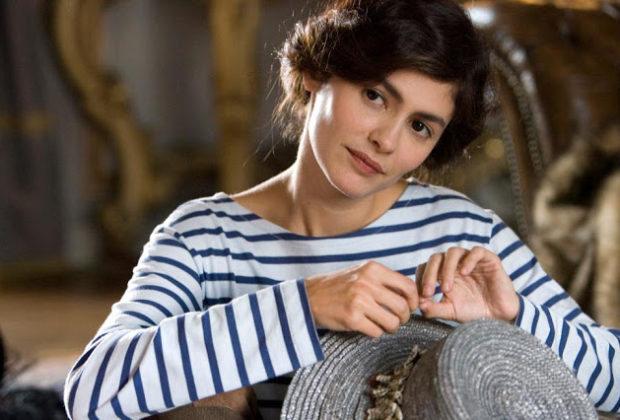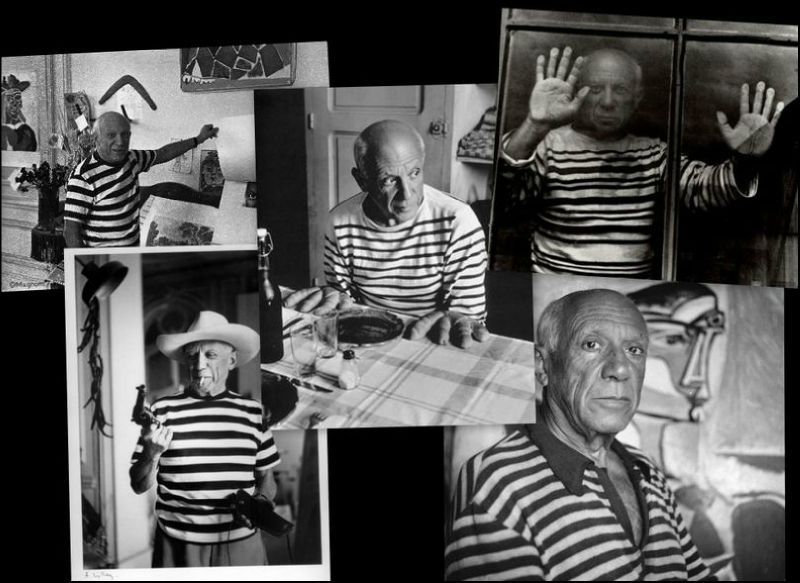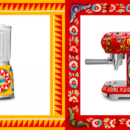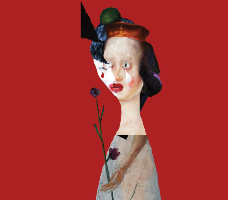
La Marinière, the wonderful story
The street style inspiration is nothing new, as Coco Chanel discovered one of the most iconic pieces in fashion history just like this, almost one century ago. However, the blue and white striped shirt had already told a story of its own, long before it became a trend, in the early 1900’s.
In 1858, la marinière was recorded by degree as the official undergarment of the French Navy. Its signature feature was a block pattern of 21 white stripes and 20–21 blue stripes with 15 white stripes and 14–15 blue stripes on the sleeves.[1] The legend says that the stripes represented the 21 naval victories of Napoleon’s fleet against the British – Saint-James, the brand producing the famous blouse for almost a century, assumed the story and also sustains that the main purpose of the stripes was to make the person visible in the waves, if he went overboard.

It didn’t become a fashion item until the Victorian age, when many aristocratic families would order miniature sailor costumes for their children. Even Albert Edward, Queen Victoria’s son, had one that he wore when travelling by the Royal Yacht.
La marinière entered the women’s wardrobe soon after Gabrielle Chanel started wearing it during her holidays in Deauville, at the beginning of the XXth century. Paired with some loose trousers and a straw hat, it quickly became a uniform for all the strong women out there, daring to adopt a more masculine outfit. In the same vein, the author of Nautical Chic, Amber Butchart, remembers some key influencers of the trend, including the wealthy US expatriates Gerald and Sara Murphy, whose Riviera home, Villa America, was a playground for the Jazz Age social set. The couple inspired the characters Dick and Nicole Driver in F. Scott Fitzgerald’s novel, Tender Is the Night.[2]
 “They set up this amazing home on the Riviera where all of the leading lights of the day would congregate and there’s an account of Gerald Murphy going to Marseille to get supplies for his house and coming back with a load of these striped tops, basically undershirts, that he’d picked up in a boat supply shop and distributing them to his guests.”[3] – Amber Jane Butchart
“They set up this amazing home on the Riviera where all of the leading lights of the day would congregate and there’s an account of Gerald Murphy going to Marseille to get supplies for his house and coming back with a load of these striped tops, basically undershirts, that he’d picked up in a boat supply shop and distributing them to his guests.”[3] – Amber Jane Butchart
Jackson Pollok or Pablo Picasso are just some of the famous artists who chose to wear the striped shirt, as the bonds between the creative minds of that period and the fishermen’s villages were so strong. They would install “artist colonies” in spectacular fishing towns, both in the Northern and the Southern shores of France.

In 1963, the director Jan-Luc Godard resumed Chanel’s idea and dressed Brigitte Bardot in a timeless marinière for the movie Le Mépris. Also, she would make an appearance at the Cannes Film Festival, wearing a red and white striped shirt, which matched her perfectly. The catwalk soon caught on, with Yves Saint Laurent reinterpreting the marinière in his first collection (Spring/Summer 1962) and the garment continues to serve as inspirational fodder for fashion designers today from Jean Paul Gaultier to Comme des Garçons.

In 2011, at Karl Lagerfeld’s suggestion, the French football team was dressed in striped jerseys, in a nice attempt to regain an identity. Likewise, on 19 October 2012, Arnaud Montebourg, the French Industry Minister of that time, wore an Armor Lux marinière in a cover photo for Le Parisien’s magazine. Montebourg had agreed to the magazine’s request to wear a marinière, with a French-made watch, in front of French-made household appliances. The cover article was a ten-page dossier on “Made in France“, Montebourg’s domestic production drive.[4]

The blue and white striped shirt became an identity construct, feeding the persisting cliché, which describes a French person dressed like this, wearing a beret and holding a baguette. However, its story goes beyond perceptions and the closer we look, it deepens more into a statement.
Sources:









